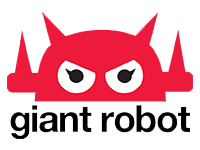Giant Robot Store and GR2 News
The Tohoku Cotton Project is one of the many ongoing efforts to recover and empower the land and people who were affected by the March 2011 earthquake and tsunami. Cotton was planted in the salt-soaked rice fields that had made the region famous. Farmers were given new hope to keep the land alive, and members of the community volunteered to plant and harvest the crop that would speed the recovery of the soil. Watch the film about the project. On the whole TCP is genius. It’s about better land usage, rebuilding people’s lives, becoming less dependent on imported raw materials, and moving forward. Follow the Tohoku Cotton Project on Facebook, and if you’re in Japan, keep an eye out for the logo appearing on goods produced with Tohoku cotton.
Continue reading
When we last spoke to translators for Genron, they were hard at work translating articles for the recent issue of the Shisouchizu Beta journal. Genron is a company founded by one of Japan’s premier critics, Azuma Hiroki, the author of Otaku: Japan’s Database Animals. Genron offers an accessibly fresh “critical discourse” based on “the here and now” in Japanese society. This may sound broad, but it’s merely a reflection of the journal’s range of topics. The journal analyzes everything from the otaku and gyaru subcultures to Japanese political science and literary criticism. There’s something for everyone here. It’s academically intellectual, yet journalistically readable and has information unobtainable through Western media. The new issue, Japan 2.0, confronts Japan’s looming future after the Great Tohoku Earthquake of “3/11”. “Japan was forcibly changed by the violence of the disaster,” Azuma writes in the opening note. “What we need now are words that, accepting this as a premise, act as a lighthouse which, though perhaps unable to provide the answer to the question of where Japan should be headed, may at least hazily light the way forward.” Communication and change are indeed the journal’s raison d’être. The presence of communication in Japan’s contemporary “atmosphere,” it’s evolution, and the necessity in its transformation for the future is a recurrent point throughout the issue. We had a peek at some of the translated articles and abstracts in the back of the journal. I’ll write comments on the individual articles within the issue in the near future. In the mean time here’s a brief summary. Highlights include an interview with Fukushima Maiko and Shikura Chiyomaru. Fukushima, better known as Mofuku-chan, is the president of Moé Japan and creator of the Mogra and Dear stage clubs and producer of the Denpagumi.inc idol group. Shikura is the president of MAGES and was involved in the production of Steins;Gate. Together they discuss the current state of Akihabara and some of the challenges and possible changes it faces in the future. They explain how its culture evolved from “2D otaku” to “3D otaku” more interested in creating content through mediums like Nico Nico Douga and interacting with idol groups like AKB48. Challenges for Akihabara include the manga market’s competition with cellphones. What’s emphasized is that the otaku, usually stereotyped as asocial creatures, seek out modes of communication. They merely used different entertainment mediums as a means for discussing its content for hours on end. Included within the interview is a photoshoot narrated in the style of a Japanese Role Playing Game with Azuma, Shikura, and Fukushima cosplaying as archetypical characters from the genre. The narrative posits whether or not Moé, Akihabara, and the otaku can save the future. Next is a transcribed speech from Murakami Takashi at his 500 Arhats Exhibit in Doha, Qatar. In it, he describes his motivation for constructing such an art piece and addresses its relationship between it and the Tohoku Earthquake. “I wanted to depict the chaos of Japan in painting and make it a message...
Continue reading



